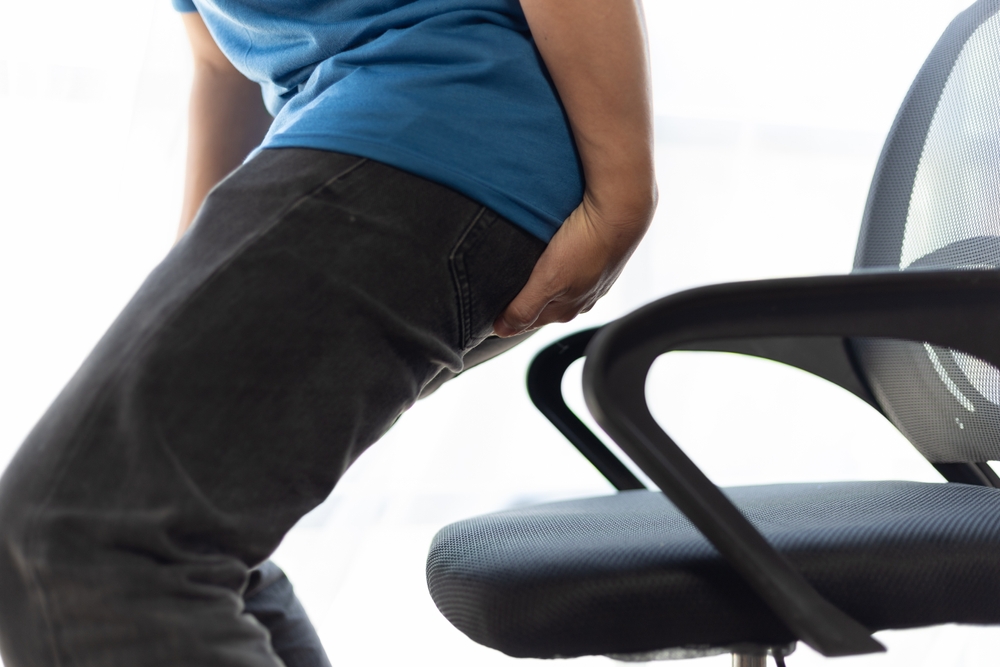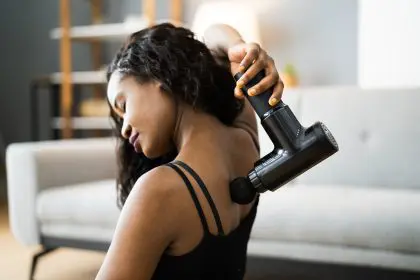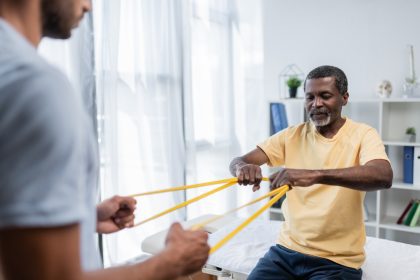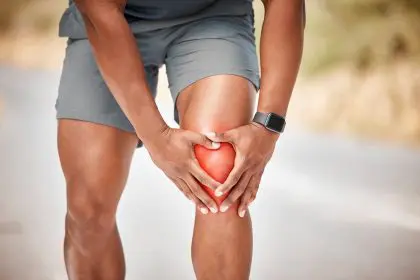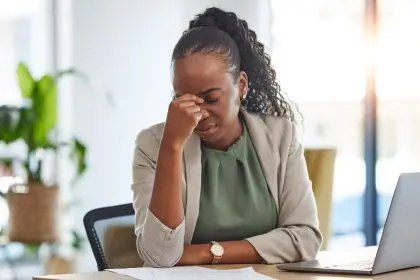The term “office chair butt” has recently made its way into the wellness conversation, especially across platforms like TikTok. This phenomenon, while somewhat informal, is causing many to rethink the impact of prolonged sitting on the body—specifically on our glute muscles. With a growing number of people spending extended hours seated, it’s important to understand what office chair butt really means and how to maintain muscle health while working at a desk.
What is office chair butt?
Though “office chair butt” isn’t recognized as a formal medical condition, experts have begun acknowledging the consequences of prolonged sitting on the glutes. Evan Johnson, DPT, director of Och Spine Care Outpatient Physical Therapy, explains that long periods of inactivity can lead to weakened glute muscles. Sitting for hours without movement leads to muscle deconditioning, ultimately resulting in a loss of strength and muscle tone.
It’s not just about the aesthetics of a flat or soft appearance of the glutes; it’s about the overall health of the muscles that support posture and movement. When the glutes become weak, the body compensates, often leading to pain and discomfort in areas like the lower back and thighs.
Effects of prolonged sitting
Sitting for long stretches isn’t just a minor inconvenience for the body—it’s a strain on various muscle groups. Over time, muscle weakness becomes more apparent, especially in areas that are meant to support movement, such as the glutes, hamstrings, and even the deltoids. Let’s break down the major effects:
Muscle weakness: One of the most immediate consequences of prolonged sitting is weakened glutes and other stabilizing muscles. When muscles aren’t activated, they begin to lose their tone and strength, leaving them less capable of providing support for the rest of the body.
Altered appearance: With continued inactivity, muscle tone declines, and the shape of the buttocks may change. Some people notice a flattening effect, as the muscle mass diminishes from lack of use.
Potential pain: While sitting alone doesn’t directly harm the muscles, weakened glutes can lead to discomfort in other areas of the body. People may experience tension in their thighs, hips, or lower back due to compensation from weakened glutes.
Who is at risk?
While anyone who spends a lot of time sitting could be at risk for developing office chair butt, certain groups are more susceptible. Individuals with sedentary jobs, particularly those who spend the majority of their day sitting at a desk, may experience muscle deconditioning more rapidly. Additionally, women and older adults may face an increased risk, as muscle flexibility and tone naturally decline with age. For these populations, it’s crucial to take preventive measures to combat the effects of prolonged sitting.
Preventing office chair butt
The good news is that office chair butt is largely preventable. There are a variety of strategies that can help keep your glutes—and the rest of your body—strong and healthy, even if you’re sitting for long hours each day.
Stay active: The most important thing you can do is regularly get up from your desk. Whether it’s taking a walk around the office or using the stairs instead of the elevator, incorporating short bursts of movement into your day helps keep your muscles engaged.
Use a standing desk: If possible, switch to a standing desk or a sit-stand workstation. This reduces the amount of time spent seated and encourages better posture throughout the day. Many people find that standing desks increase their energy levels and productivity as well.
Muscle activation: Even while seated, you can engage your muscles. Simple activities like glute squeezes or calf raises every 15 minutes can help maintain blood flow and prevent muscle atrophy. These short exercises can be done discreetly at your desk, making them easy to incorporate into your daily routine.
Exercise: Incorporating regular exercise into your lifestyle is essential to combat the effects of prolonged sitting. Focus on exercises that target the glutes, such as bridges, squats, and clamshells. These movements help build strength and tone in the glutes, counteracting the negative effects of sitting. Aim for a balance of strength training and flexibility exercises to ensure all-around fitness.
Conclusion
Adopting a few healthy habits can make a significant difference in maintaining strong and shapely glutes, even while working at a desk for hours each day. Beyond the physical benefits, these strategies help promote a sense of well-being, boosting self-esteem and encouraging a more active lifestyle. Remember, everyone’s body is different, and it’s important to celebrate the diversity of body shapes and sizes.
If you notice any persistent pain or discomfort, it’s always wise to consult a healthcare provider for personalized guidance. With the right approach, the effects of office chair butt can be mitigated, allowing you to enjoy a healthier, more active workday without sacrificing the comfort or productivity that a desk job provides.

